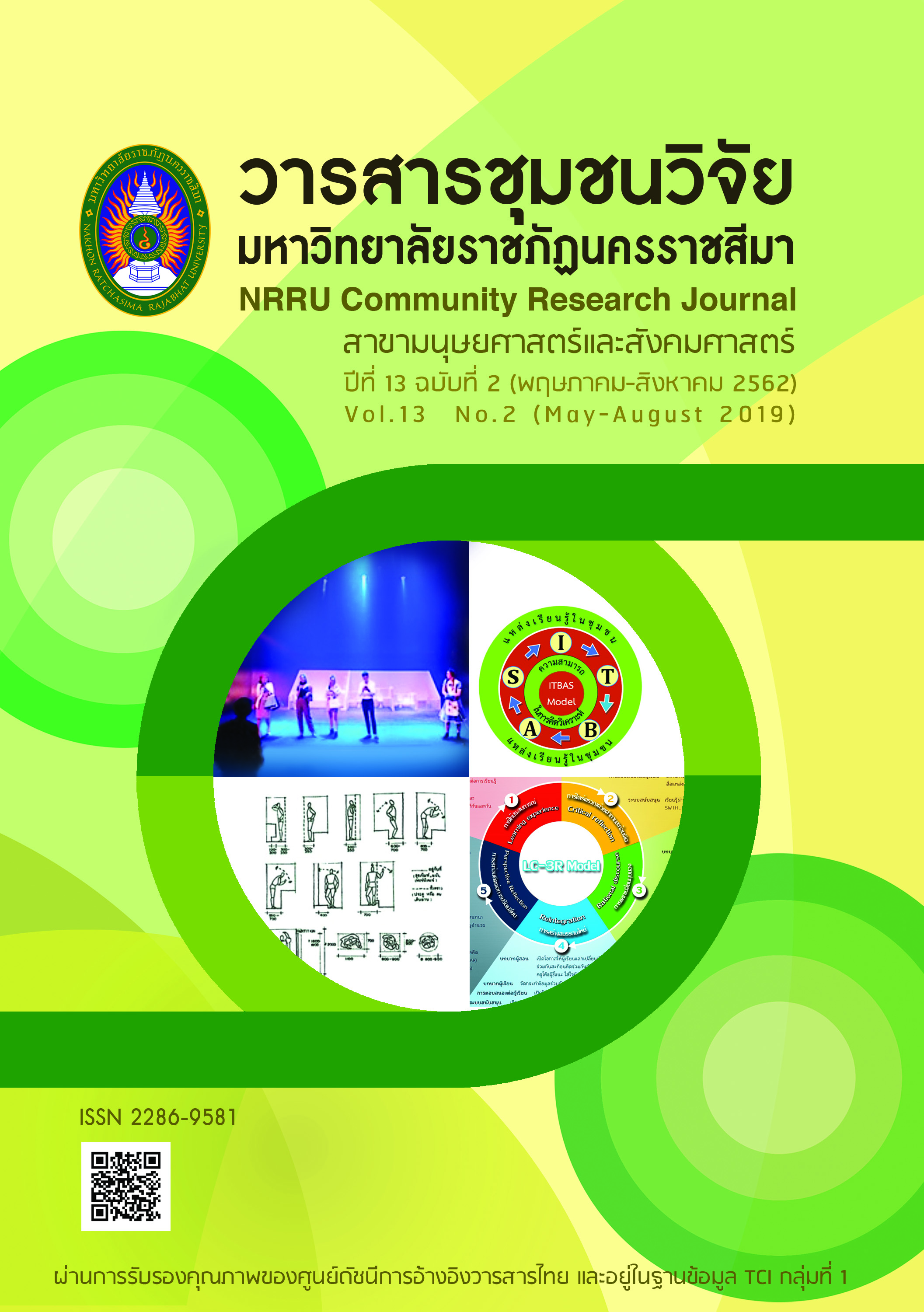POTENTIAL AND PROBLEMS OF KANCHANABURI TOURISM AS A BORDER TOWN
DOI:
https://doi.org/10.14456/10.14456/nrru-rdi.2019.29Keywords:
Potential, Tourism Issues, Border tourismAbstract
This research aimed to study the potentials and issues in Kanchanaburi tourism as a border city and it was a qualitative research consists of 1) the studied process and analysis of information from documents, books, textbooks, reports, concepts, and 124 articles about Kanchanaburi from 2007 to 2016, and 2) the focus group discussion from 20 experts who worked in 4 different sectors as government, academic, civil society, and private sector. The instruments were recording form and group discussion form that were analyzed by content analysis. The results found that 1) there was high level potential tourism from several natural resources, historical resources, and various tribes especially at border area. There were the permanent point at Bann Phunamron and Border Special Economic Zones. The relationship between Thai - Myanmar that was the component for supporting border tourism development, and 2) the border tourism development planning that wasn not enclosed in Border Special Economic Zones Plan. There was overlap in communities because of tourism. The issues did not support the tourism that was cause of deterioration. There was an external factor that was political stability problem from the neighbor country. The minority in Myanmar that had influenced to the border commercial and tourism. Kanchanaburi located along the Srisawat and Three Pagodas Fault Zone. This research was from the potentials and issues in Kanchanaburi as border city that was important to decide the policy recommendation for supporting the development of tourism at Kanchanaburi in the future.
References
Bryman, A., & Burgess, R. G. (1994). Reflections on qualitative data analysis. Analyzing qualitative data, 216-226.
Buhalis, D. (2000). Marketing the competitive destination of the future. Tourism management, 21(1), 97-116.
Charumanee, N. (2001). Tourism and tourism industry management. (2nd ed.). Bangkok : Odeon Store Publishing. (In Thai)
Chatkul, N. (2014). Tourism Industry. Bangkok : Chulalongkorn University Press. (In Thai)
Cooper, C., Scott, N., & Baggio, R. (2009). Network position and perceptions of destination stakeholder importance. Anatolia, 20(1), 33-45.
Dickman, S. (1996). Tourism: An Introductory Text (2nded.). Sydney : Hodder Education.
Fainstein, S. S., & Judd, D. R. (1999). Global forces, local strategies, and urban tourism. The tourist city, 2.
Guba, E. G., & Lincoln, Y. S. (1982). Epistemological and methodological bases of naturalistic inquiry. ECTJ, 30(4), 233-252.
Hakim, C. (1987). Research Design: Succesful Designs for Social Economics Research. London : Routledge.
Immigration Bureau. (2017). Statistics of arrival - departure visitor of the Thai Kingdom classified by visa. Retrieved September 2017, from https://www.immigration.go.th/immigration_stats (In Thai)
International Institute for Trade and Development (Public Organization). (2015). Guidelines and measures for the development of special economic zones in the border areas of Thailand. Bangkok, Thailand : Author. (In Thai)
Jittangwattana, B. (2006). Sustainable tourism development. Bangkok: Press and Design. (In Thai)
Johnson, H., & Wilson, G. (2000). Biting the bullet: civil society, social learning and the transformation of local governance. World development, 28(11), 1891-1906.
Keogh, B. (1990). Public participation in community tourism planning. Annals of tourism research, 17(3), 449-465.
Matznetter, J. (1979). Border and tourism: Fundamental relations. In Paper presented at the Tourism and Borders: Proceedings of the Meeting of the IGU Working Group-Geography of Tourism and Recreation.-Frankfurt: Institut für Wirtschaftsund Sozialgeographie der Johann Wolfgang Goethe Universität (61-73).
Miles, M. B., Huberman, A. M., & Saldana, J. (2014). Qualitative data analysis 3rd Edition: Source book of Bew Methods. Baverly Hills: SAGE Publications Inc.
Ministry of the Interior. (2013). Announcement of the Ministry of Interior: Opening the Permanent Border Crossing BanPhunamron. The Government Gazette, 130(7), 9. (In Thai)
Moscardo, G. (2008). Community capacity building: An emerging challenge for tourism development. Building community capacity for tourism development, 1-15.
Office of Kanchanaburi Governor. (2017). Four years of Kanchanaburi Development Plan 2018-2021. Kanchanaburi, Thailand : Author. (In Thai)
Okech, R. N. (2010). Wildlife-community conflicts in conservation areas in Kenya. African journal on conflict resolution, 10(2), 68-80.
Parmar, B. L., Freeman, R. E., Harrison, J. S., Wicks, A. C., Purnell, L., & De Colle, S. (2010). Stakeholder theory: The state of the art. The academy of management annals, 4(1), 403-445.
Patton, M. Q. (1990). Qualitative evaluation and research methods: SAGE Publications, inc.
Pearce, P. L., Moscardo, G., & Ross, G. F. (1996). Tourism Community Relationships. Oxford : Pergamon Press.
Pelasol, M. R. J., Tayoba, M. A. T., Mondero, E., Jugado, K., & Lahaylahay, C. (2012). Igcabugao: a potential tourist destination in the southern part of Iloilo, Philippines. EDITORIAL BOARD, 71.
Phayakvichien, P. (2000). Sustainable tourism development. TAT Tourism Journal, 2(1), 5-10. (In Thai)
Pimolsompong, C. (2011). Plan and development of tourism marketing. Bangkok : Publisher of Kasetsart University,Thailand. (In Thai)
Reid, D. G., Mair, H., & Taylor, J. (2000). Community participation in rural tourism development. World Leisure Journal, 42(2), 20-27.
Swarbrooke, J. (1999). Sustainable tourism management. Cabi.
Timothy, D. J., & Tosun, C. (2003). Tourists’ perceptions of the Canada–USA border as a barrier to tourism at the International Peace Garden. Tourism management, 24(4), 411-421.
Woodhouse, A. (2006). Social capital and economic development in regional Australia: A case study. Journal of rural studies, 22(1), 83-94.





